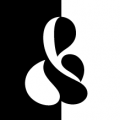Ideal node placement

AbiRasheed
Posts: 248
For some time now I've had problems with curves like in the linked image. My problem is what would be an ideal node placement when you have two opposing BCPs that aren't tangential to one another? I'm going for something like how tt curves are drawn. I know a node goes in the centre of these two but that still won't make them tangential to one another unless in my experience adding atleast 2 more or even 3 nodes sometimes. Sometimes converting to a TT curve gives me hints on how I can keep them tangential but for curves like in the image, it doesn't help me. I've also looked at cursive typefaces that have such a curve or even simply the spine from an 'S'. For both these cases I've noticed the curve is a lot simpler where people sometimes completely omit adding a node in the center(don't wanna do this), or in some cases they add one. But because the curve is a lot simpler adding just 1 node allows the other 3 to be all tangential. I tried the same thing here but it just doesn't work certainly not with 1 node. Any input would be appreciated.
Thanks!
Thanks!

Tagged:
0
Comments
-
I'm not sure I get what you mean, but the standard way to draw such a curve would be to replace the two middle on-curve points with a single one, placed at the inflection point (where it changes from concave to convex, between the current two middle points). That point would be smooth, ie, its handles would be at 180° to each other. Is this of any help?6
-
There's not enough tension in the middle to require an extra point. Unless you're resolution is high, you're more likely to distort the line by adding an extra point.
As for replacing both points with one; absolutely not. If you do that, you limit the choices for the speed at the ends. Assuming this is for an S, you'll need that extra control to harmonize with whatever kind of curve you're attaching this to. My first hundred or so fonts had middle points on the spines and I've gone back and rebuilt a lot of of them. Yes, it's possible to use a single point in the middle of the curve but it's quite limiting.
As for where those two points are placed on the spine, most of the placement decision should be to get the curves on the ends flowing pleasantly into whatever they're connected to. That's the challenging part of making an S. The middle part is easy.
In the middle, pull the handles about a quarter to a third of the distance and try to match the launch angles. The way you've done it in the sample seems fine. If you can't match the launch angles, you probably need to move the points. Sometimes, such as in the case of a superelliptical typeface, you might want to create less tension in the middle and more on the ends.
RMX Harmonizer can help but you'll have to adjust those launch angles in the middle part as it's not perfect when it comes to balancing that S tension. But I find it often helps me find a good spot to place the points on the curve.2 -
@Ori Ben-Dor thanks, yeah I'm familiar with that method which is why I mentioned S as an example. Thing is the curve in the example is slightly different to something like we see with S where it's more like a stretched curve and then you add an inflection point. With mine it's less of tension because there's more than 1 inflection area(if you wanna call it that). What Ray said is something in line with what I'm thinking where these curves don't have tension. My usual method is to do something like the below image.
 Problem with this method is it's sometimes hard for me to edit them. Fontaudit even suggested that I could remove the left node at the bottom, but in doing so it totally changes the curve adding a lot of tension around there, something that doesn't fit in with this curve at all. If you asked me why I wouldn't know but it just looks stretched and weird if that node isn't present there. I was curious to find out if any of you thought my node placement in the above image was something normal everyone did or if it was a bad approach. Ray can you put what you said in a gif maybe so I get an idea? thanks! 0
Problem with this method is it's sometimes hard for me to edit them. Fontaudit even suggested that I could remove the left node at the bottom, but in doing so it totally changes the curve adding a lot of tension around there, something that doesn't fit in with this curve at all. If you asked me why I wouldn't know but it just looks stretched and weird if that node isn't present there. I was curious to find out if any of you thought my node placement in the above image was something normal everyone did or if it was a bad approach. Ray can you put what you said in a gif maybe so I get an idea? thanks! 0 -
Here's a typical curve I used on an S. This is part of a lowercase s from a variation of Galderglynn Esquire which is based on 19th century grotesques. Round on the inside and slightly superelliptical on the outside.
When I refer to spine here, I mean points 2, 3, 4 and 5. I think two points on the spine gives you sufficient control of the flow on the ends of the curve. It could be argued that using 3 points gives you more control. I but I think you could take your 3 point curve, put it on the background layer and recreate the same curve with 2 points.
Try this: take a 3 point spine as in your example and copy it to the background layer. Remove the middle point. Now adjust the length of what I refer to as the "launch angles" in the image. Don't chance the angle, just the handle length. In FLS5, you'd hold shift and click drag the handles. Simply by adjusting the length of the handles, you can precisely match the curve on the background layer. That's what I think the 3rd point is unnecessary.
3 -
@Ray Larabie I see what you mean and I've tried this before using 2 launch nodes by first drawing it like the last image I posted using 3 and then removing the middle node, it automatically adjusts by matching the curve using only 2 nodes, it is slightly different to using 3 nodes but very close. Thing is they're not tangential and I always thought that's considered bad. Surprisingly Fontaudit doesn't complain about it unless I convert it to tt.0
-
Depending on the angles and spine shape, in some cases you can manage it with even one fewer point. Just place one in between those two in the middle, and delete the other two.
(If you are using FontLab VI, you can shift-alt drag an on-curve node around, to keep the curve shape while moving the node. Sometimes this helps get that precise positioning you need on an s-curve.)5 -
thanks @thomas0
-
Fontlab VI is pretty well design to do that type of work.Thomas Phinney said:(If you are using FontLab VI, you can shift-alt drag an on-curve node around, to keep the curve shape while moving the node. Sometimes this helps get that precise positioning you need on an s-curve.)0
Categories
- All Categories
- 46 Introductions
- 3.9K Typeface Design
- 486 Type Design Critiques
- 563 Type Design Software
- 1.1K Type Design Technique & Theory
- 655 Type Business
- 859 Font Technology
- 29 Punchcutting
- 520 Typography
- 119 Type Education
- 324 Type History
- 77 Type Resources
- 112 Lettering and Calligraphy
- 33 Lettering Critiques
- 79 Lettering Technique & Theory
- 557 Announcements
- 94 Events
- 114 Job Postings
- 170 Type Releases
- 178 Miscellaneous News
- 276 About TypeDrawers
- 54 TypeDrawers Announcements
- 120 Suggestions and Bug Reports



